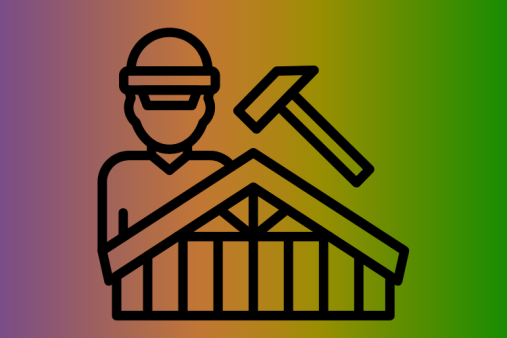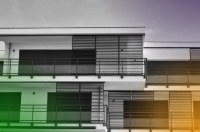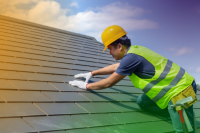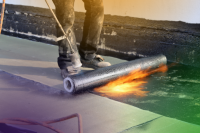A Complete Guide to Different Types of Roof Tiles in the UK
If you’ve travelled around the UK, you’ll have noticed how different the roofs look from region to region. In the south, red clay tiles are common, while slate dominates in the north and Wales. These regional variations date back to when roofing materials were sourced locally.
Today, homeowners have far more choice. Whether you’re replacing an old roof or designing a new one, you’re no longer limited by tradition — you can choose a roof tile that best suits your property’s style, structure, and budget.
Below, we’ll explore the main types of roof tiles used in the UK, their advantages and drawbacks, and tips for choosing the right material for your home.
1. Clay Roof Tiles
Best for: Traditional homes, listed buildings, and properties in conservation areas.
Clay roof tiles are one of the oldest and most distinctive roofing materials in the UK. They’re especially popular in southern England, where their warm red or orange tones complement brick and stone buildings beautifully.
Pros:
- Natural, timeless aesthetic
- Highly durable and weather-resistant
- Available in a wide variety of shapes and colours
- Eco-friendly and often recyclable
Cons:
- Heavier than synthetic or bitumen tiles
- Can crack in frost if not sealed properly
- More expensive than concrete alternatives
Tip: If you’re re-roofing a period property, reclaimed clay roof tiles are often required by local planning authorities to preserve the area’s historic look.
2. Concrete Roof Tiles
Best for: Modern homes, large roofs, and cost-conscious projects.
Concrete roof tiles are among the most widely used roofing materials in the UK. They can be made to imitate the look of slate or clay, offering versatility without the higher price tag.
Pros:
- Strong and long-lasting
- Cost-effective and easy to source
- Available in a range of finishes and colours
Cons:
- Heavy, which may require additional roof reinforcement
- Colour may fade over time
- Lacks the natural variation of clay or slate
Did you know? Concrete roof tiles can last 50 years or more with proper maintenance, making them an excellent balance between affordability and durability.
3. Slate Roof Tiles
Best for: Premium homes, heritage buildings, and properties in northern UK regions.
Slate roof tiles are a hallmark of craftsmanship and longevity. Quarried from natural stone — often in Wales or Spain — slate offers a unique, elegant texture that enhances both period and modern homes.
Pros:
- Extremely durable (can last 100+ years)
- Low maintenance and resistant to fire and rot
- Adds natural colour and character to a roof
Cons:
- Heavier and more expensive than other materials
- Requires skilled installation
- Fragile during handling or fixing
Tip: If you live in a listed building, local councils often require natural slate to match the area’s existing roofs.
4. Synthetic Roof Tiles
Best for: Eco-friendly builds and lightweight roof structures.
Synthetic roof tiles are made from composite or recycled materials, designed to replicate the appearance of clay, slate, or wood while offering superior practicality.
Pros:
- Lightweight and easy to install
- Eco-friendly, often made from recycled materials
- Durable and weather-resistant
- Low maintenance
Cons:
- Newer to the market — long-term lifespan still being proven
- Higher initial cost than concrete
Eco note: Synthetic tiles are a great choice for sustainable roofing projects, reducing the environmental footprint compared to traditional materials.
5. Bitumen Roof Tiles (Asphalt Shingles)
Best for: Garages, outbuildings, and budget-friendly roofing projects.
Bitumen roof tiles — or asphalt shingles — are lightweight, flexible, and cost-effective. They’re especially popular for smaller structures but are also gaining traction in residential roofing.
Pros:
- Very affordable and easy to install
- Lightweight and low maintenance
- Available in many styles and colours
Cons:
- Shorter lifespan (typically 20–30 years)
- Less suited to traditional architecture
- Petroleum-based material, so less eco-friendly
Tip: Bitumen roof tiles are ideal for DIY-friendly roofing projects or as a quick solution for extensions and garages.
6. Metal Roof Tiles
Best for: Contemporary homes and buildings in coastal or windy regions.
Metal roof tiles — typically made from steel, aluminium, or copper — are durable, lightweight, and energy-efficient. Modern coatings help protect against corrosion and rust, making them a practical and stylish option.
Pros:
- Long-lasting (up to 70 years)
- Lightweight and easy to handle
- Reflective, helping to improve energy efficiency
Cons:
- Can be noisy in rain without insulation
- Higher cost for premium metals like copper
- Needs protective coating to prevent corrosion
Did you know? Metal roof tiles are fully recyclable at the end of their life, making them a sustainable choice for modern roofing.
7. Natural Stone and Reclaimed Roof Tiles
Best for: Heritage homes, conservation areas, and rural settings.
In certain parts of the UK — such as the Cotswolds, Yorkshire, and Cornwall — natural stone or reclaimed tiles are traditional and sometimes mandatory for listed buildings.
Pros:
- Authentic, local character
- Extremely durable
- Environmentally friendly (reuse of existing materials)
Cons:
- Very heavy
- Expensive to source and install
- Limited availability
Tip: If you’re renovating in a conservation area, check planning requirements before choosing modern replacements.
Choosing the Right Roof Tiles for Your Home
When deciding which roof tiles are best, consider:
- Roof pitch: Some tiles need steeper slopes (e.g. slate).
- Weight: Check your roof’s load-bearing capacity.
- Local climate: Choose frost-resistant materials in colder areas.
- Budget: Balance upfront costs with expected lifespan.
- Planning rules: Listed buildings often have material restrictions.
FAQs: Roof Tiles UK
What are the most popular roof tiles in the UK?
Clay and concrete roof tiles remain the most common due to their availability, cost, and traditional appearance. Slate is also popular in the north and west, where it’s part of regional architecture.
What are the best roof tiles for longevity?
Natural slate offers the longest lifespan, often exceeding 100 years with proper care. Concrete tiles are also durable, lasting 50+ years.
Which roof tiles are most eco-friendly?
Synthetic roof tiles made from recycled materials and natural clay tiles both have excellent sustainability credentials.
Can I mix different roof tile types?
In some cases, yes — for example, using metal or synthetic tiles for extensions and traditional clay or slate for the main roof. Always check compatibility with your roofer first.
Final Thoughts
Your choice of roof tile can dramatically change the appearance, performance, and longevity of your home’s roof. Whether you’re restoring a period property with clay or slate, or opting for a modern, sustainable synthetic alternative, understanding your options will help you make the right investment.
A roof is more than protection — it’s part of your home’s identity. Choose wisely, and it will last for decades







